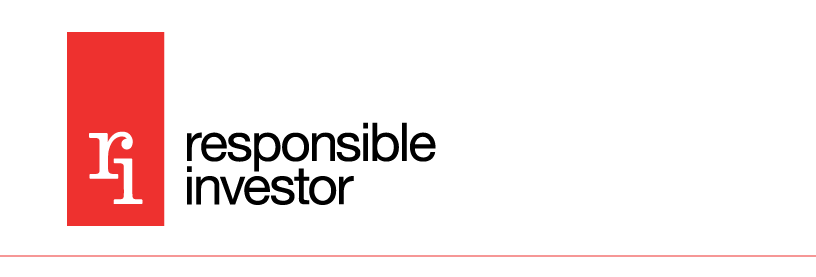
Northern Trust: The market for Environmental, Social and Governance (ESG)-oriented investment products has grown dramatically in recent years. Globally, ESG assets increased from US$5 trillion in 2007 to more than US$32 trillion in 2012 – equal to roughly 25% of all the world’s financial holdings1. And US-domiciled assets engaged in sustainable and responsible investment practices totaled more than USD$3.3 trillion in 2012, roughly 11% of all funds under management. Although the strict definition of an ESG-oriented product is subject to debate, it is clear there is strong upward asset momentum in this category. Investors have various motivations for incorporating ESG considerations into their portfolios. Some investors need to meet mandated environmental or social goals, others do it for reputational or political reasons, and still others may act on a belief that strong ESG companies will outperform over a long time horizon. As investors consider incorporating ESG considerations into their portfolios, a number of questions arise:
How will an ESG orientation affect the performance of the portfolio?
Will incorporating ESG criteria result in an unintended bias to specific countries or sectors?
How can we best structure an ESG-oriented portfolio to deliver strong performance?
Bridges Ventures / BAML: The debate about a supply-demand mismatch in impact investing has often centred on its characterisation as a relatively high risk strategy and therefore on whether sufficiently high risk-adjusted financial returns are achievable. This report shifts the lens: while demonstrating a track record of sufficient financial return is one way to bring supply-and-demand into line (and is a key step forward for the impact investment industry), another approach is to adjust the risk side of the equation – to ‘de-risk’ impact investment.
Fixed income is the world’s largest asset class with government and corporate bonds accounting for some 35% of global institutional investment. But to date, bonds haven’t received the attention on material ESG factors they should have, given the importance of their allocation and the relatively long time that investors hold them for. This is changing dramatically, reflecting a number of key evaluations by institutional investors about the sustainability of bond investments.
Read the report of the event! More than 300 investors, including over 40 asset owners attended the RI Americas conference 2013 in New York on December 10th and 11th, organised by Responsible Investor in partnership with Bloomberg.
RI INSIGHT DENMARK: asset owner leaders in ESG and renewables is a collection of exclusive RI asset owner interviews with Denmark’s biggest pension funds: ATP, Unipension, PKA, PBU, PFA and PensionDanmark. In 2009, the Danish government allowed UN-sponsored PRI (Principles for Responsible Investment) or UN Global Compact membership to represent a company’s legal corporate social responsibility requirement. It led to a significant move by Danish asset owners to sign up to the PRI, joining peers who had been at the forefront of the PRI’s genesis. Today, Denmark has 15 PRI asset owner signatories – one of the biggest country asset owner representations. RI went to Denmark to interview six of them face-to-face. Danish asset owners have been leaders in investment in renewable energy; often clubbing together on deals. They have also been at the forefront of ESG integration in their investment processes. This second RI Insight special on Denmark (following RI Insight Part 1 on Ireland’s renewable energy renaissance) looks at the ingredients that have made Denmark a leader in responsible investment, and examines what the future holds.
CDP Global Water Report 2013. This report establishes that a misguided approach to water related risk management has become entrenched as business as usual. Corporate focus is too often directed at water use, reduction, recycling or reuse, largely in direct operations only. This is an inadequate response to increasingly immediate substantive water risks threatening shareholder value. Companies must instead strive for water stewardship but a significant step change is required if stewardship is to be truly achieved. This report is written to help investors take a leading role in educating and guiding companies on the issue.
Australian and Canadian pension funds have been pioneers in infrastructure investing since the early 1990s. They also have the highest asset allocation to infrastructure around the globe today. The ‘Canadian model’ and the (new) ‘Australian model’ of infrastructure pose a challenge to the ‘private equity model’, dominant in Europe and the USA. This new paper compares and contrasts the experience of institutional investors in the two countries looking at factors such as infrastructure policies, the pension system, investment strategies and governance of pension funds. Important lessons can be learnt by both policy makers and investors. Inderst, G. and R. Della Croce (2013), “Pension Fund Investment in Infrastructure: A Comparison Between Australia and Canada”, OECD Working Papers on Finance, Insurance and Private Pensions, No. 32, OECD Publishing.
Impax makes the investment case for fossil fuel divestment. The paper looks at the building pressure to divest, dispels some of the myths around divestment and considers the un-priced risks that are accumulating in the fossil fuel sector. It goes on to analyse four alternative fossil free portfolio structures. Interestingly, investors could have substituted clean energy stocks for fossil fuel stocks without any negative impact on performance. A portfolio replacing fossil free stocks with a diversified environmental technology and research optimisation strategy would have delivered the highest returns and information ratio.
480 delegates over two days participated in high level debate from some of the leading responsible investment and corporate sustainability figures at the RI Europe 2013 conference at the Grange Tower Bridge Hotel on June 11-12. This report provides a review of the highlights including the inaugural RI Reporting Awards.
In this first RI INSIGHT published by Responsible Investor with the GIFSC we examine Ireland’s initiative to establish itself as a hub for green investment, asset management, private equity, venture capital and asset servicing, under the Green International Financial Services Centre (GIFSC) banner.





















